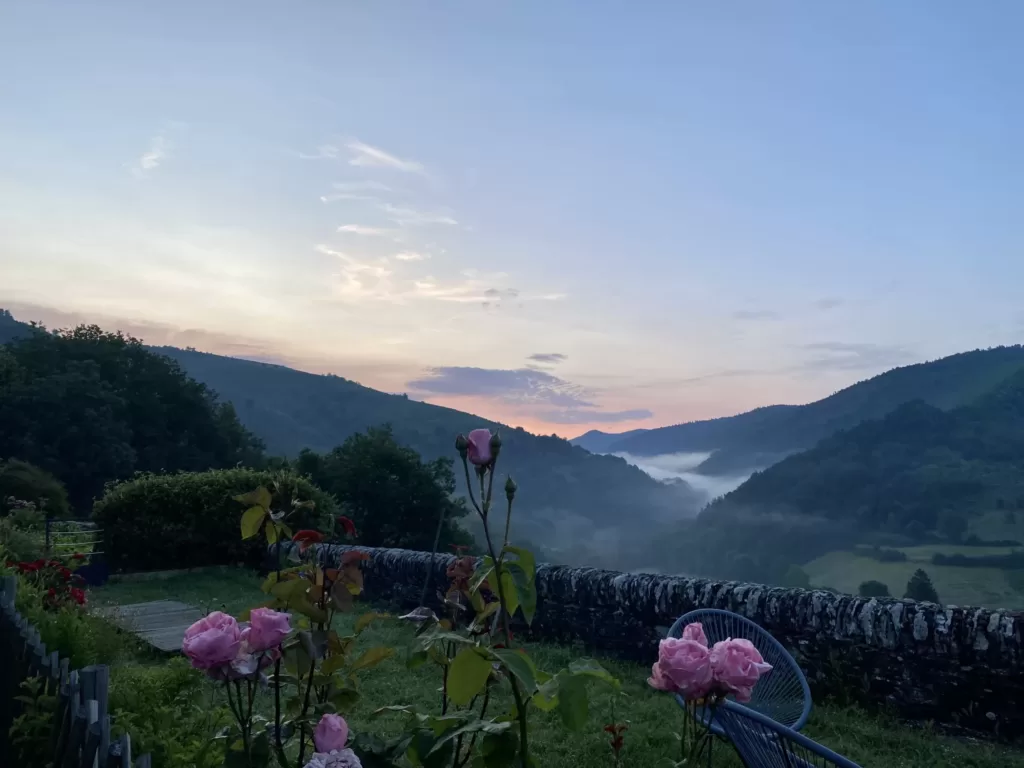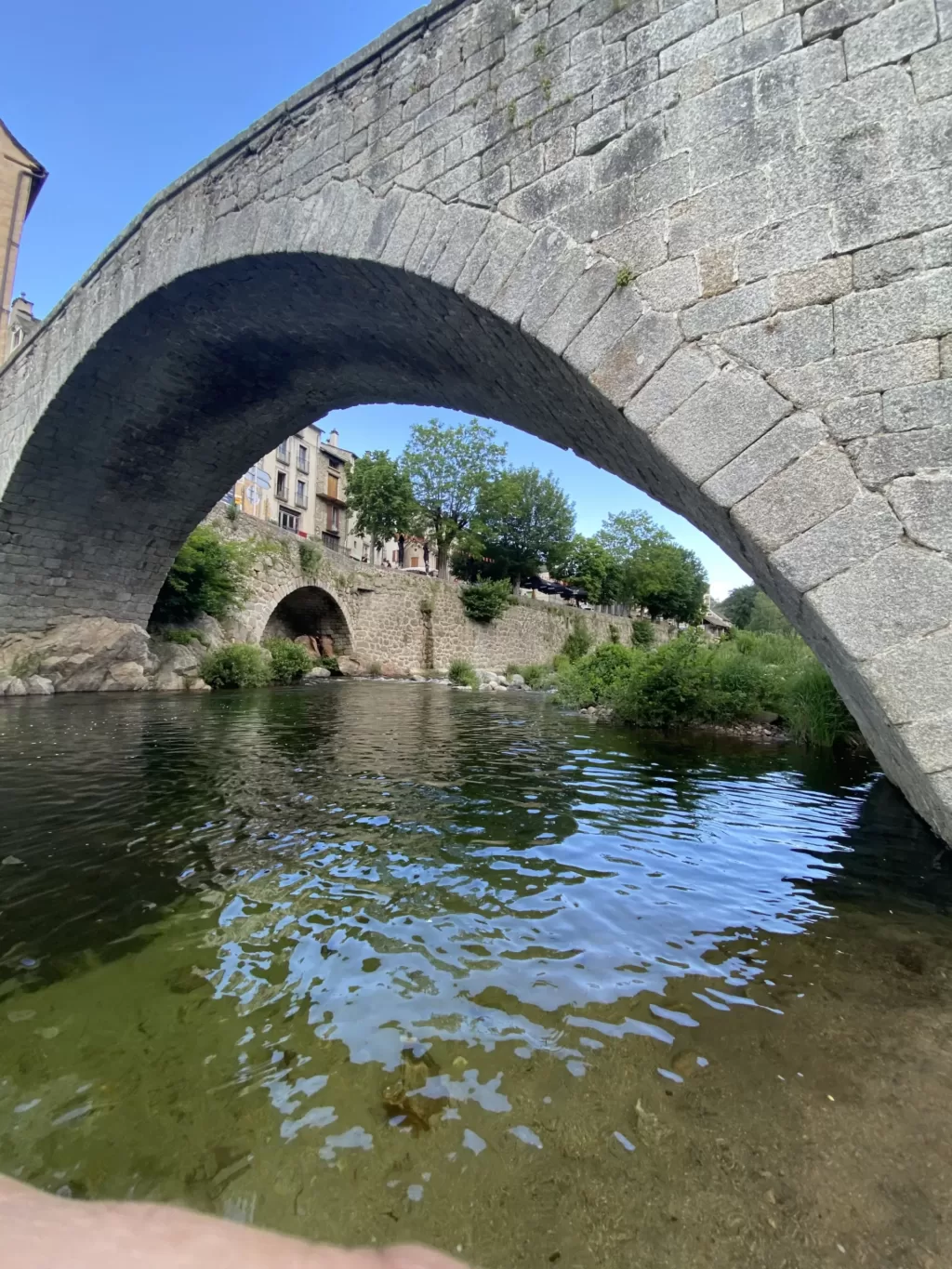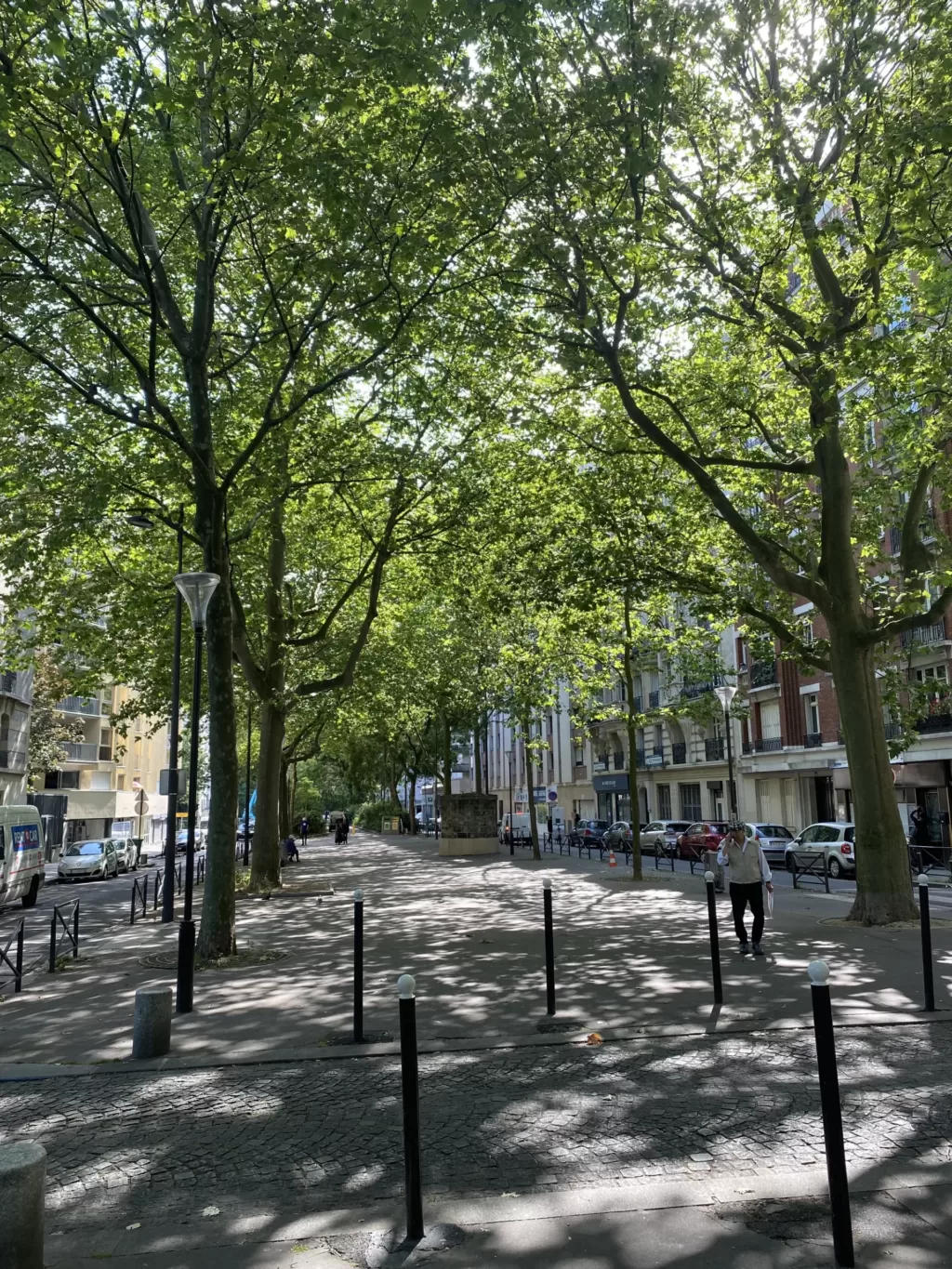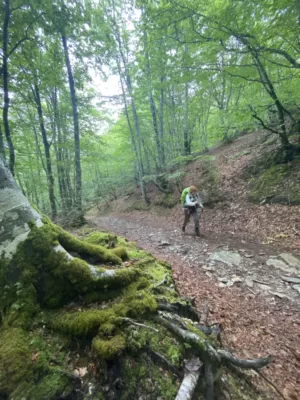France: Literary Pilgrimages – Proust, Louis Stevenson, and Modiano
On a recent trip to France, I made three literary pilgrimages, although not all were French writers. In the back of my mind, there was always the question: what do we hope to get from places that are marked by writers?

1. France: Literary Pilgrimages – Marcel Proust – Park Monceau
The first encounter was less a pilgrimage than an accident. After visiting a small Paris museum, I headed around the corner to Park Monceau in the upscale eighth arrondissement. The name of that street – rue Courcelles – rang a bell. Wasn’t there a connection to Marcel Proust? I had finally finished the seven-volume masterpiece last year so was alert to possible Proustian traces.
A quick online search confirmed that number 45 rue Courcelles was Proust’s home at the time he was writing the novel before ‘Swann’s Way‘, the first volume, was published in 1907. High up on a wall beside the large, double doorway, nearly four metres above the pavement, I could just, just, see a pale marble plaque announcing:
MARCEL PROUST 1871–1922 Lived in this building from 1900 to 1906

Hardly eye-catching, hardly celebratory. The building is now home to a law firm and the Dominican Republic’s embassy. And yet a thrill ran through me.
Here was the place where one of the greatest works of literature had taken shape. Proust himself had walked through that door, stood in this spot, and surveyed this street and the people passing.
It was all so easy to imagine and for a moment, it felt like breathing the air of the novel.
2. Second Pilgrimage: Robert Louis Stevenson – les Cévennes
The second pilgrimage required planning – six months of booking, logistics, and preparation. My wife and I followed in the footsteps of Robert Louis Stevenson, who made a 12-day walk through central France in 1878. The journey provided the raw material for ‘Travels With a Donkey in the Cévennes‘, his first published book, which is still in print today. The path today is called the Chemin de Stevenson, or the GR70 (Grande Randonnée). He went looking for traces of the Protestant communities, the Camisards, who had suffered brutal persecution during the religious wars more than a century earlier. He was also nursing a broken heart.
When Covid felled us soon after arriving in France, our scheduled 270-kilometre, the 12-day walk became 185 kilometres over eight days and began in the medieval town of Langogne. We travelled on foot, carried backpacks, stayed at chambres d’hôtes, and unlike Stevenson, ate very, very well.

Almost all the people we met on the way were French and though few had read Travels With a Donkey in the Cévennes many more were familiar with the 2020 film ‘Antoinette in the Cévennes‘, in which a schoolteacher follows her lover on holiday. The film is inspired by Stevenson’s account, with a hat-tip to Éric Rohmer’s 1986 film ‘The Green Ray‘. Both the century-old book and the recent film celebrate France’s wild places and a feeling of exploration and renewal.
Stevenson famously wrote:
I travel not to go anywhere, but to go. I travel for travel’s sake. The great affair is to move.”

The Chemin de Stevenson is not a pilgrimage, yet its literary heritage is inescapable.
That spirit of movement is alive in so many of the ‘randonneurs’ I encountered.
To walk the GR70 is to be constantly reminded of Stevenson’s travels. His quotes and images are everywhere; folk art and sculpture celebrate him all along the trail. Many of the places he stayed in, share his writing in prints and artworks.
We walked through forests of silver birch, chestnut, and oak, through farms populated by cows whose bells rang across the quiet afternoons; we saw eagles and heard cuckoos, crossed countless stone bridges, and marvelled as the landscape changed from rolling farmland to deep-shaded forests, to muscle-straining mountain climbs and the steep, flinty hillsides and narrow rivers further south.
Stevenson’s portrayal of the wild Cévennes landscapes and its difficult history enabled us to see a country through his eyes.
And even if few have read Stevenson’s travel book, there is an inescapable sense that it remains an invitation to journey into the past, to embrace the region today, and recognise the need for its protection into the future.
3. Literary Pilgrimages – Patrick Modiano – Promenade Dora Bruder

Patrick Modiano has been called ‘the Proust of our times’ but the 18th arrondissement is a world away from the elegant Park Monceau. Take the Paris Metro to Porte de Clingnancourt, the stop for the famous ‘flea market’ in the city’s north. The metro station is a bit sketchy, keep hold of your belongings, and move on. Walk for about a kilometre, tracing the curve of la petite ceinture, the railway line abandoned 90 years ago. We’re heading for Promenade Dora Bruder, not exactly a park – it
has no grass – it’s a long walkway, bordered by tall plane trees that cast a cool shelter across the gritty earth.
The familiar blue rectangular sign, beneath the name Promenade Dora Bruder, appears some text, which the author found in a small advertisement from a Paris newspaper on the last day of December 1941.
We are looking for a young girl, Dora Bruder, 15 years old, 1.55 metres tall, oval face, grey-brown eyes, grey sports jacket, maroon jumper and skirt, and marine blue hat. Brown sports shoes…”
(In Dora Bruder – Patrick Modiano 1997)
Patrick Modiano’s numerous short novels often have a dreamlike quality; a dark, noirish edge where everything is unsettled, unresolved, and uncertain. Although born in 1945, the roots of his work are in the Second World War. His novels are haunted by the complicity of French people and authorities in the deportations of more than 75,000 Jewish citizens, including 11,000 children, to the German death camps. one of those children was Dora Bruder.
In Dora Bruder (also published as The Search Warrant), the author tries to piece together the missing months between her running away from home and her deportation and murder by the Nazis, willingly aided by French military police. And yet, for all the author’s tenacious, obsessive research, there are parts of Dora Bruder’s life that he cannot know. Modiano has acknowledged the absence, this gap in the records, which he says belongs to Dora Bruder as the only thing the world cannot take from her. Since anti-Semitism took her life, she is entitled to that much at least.
Promenade Dora Bruder is a physical marker for this missing person, for the real history of Paris, and a living writer for whom the city is a map, forever to be examined and imagined, and remembered.
While I stood studying the sign, a man passed through holding a camera at his shoulder. Did he know the story of Dora Bruder, I asked. He tilted his head sideways as he read the sign, then shook his head, and walked away.
All of these three places (and no doubt you have your own list), are portals, doorways into real and imagined worlds, and different ways of being. They come in all manner of guises, but whatever shape, form, or place, a literary landmark holds most of the meaning when the stories live in us.
Have you ever undertaken any literary pilgrimages in France? Please share in the comments below.
Your subscription (free or paid) will be gratefully received, and will help me continue to build ‘le Bulletin’ – the weekly newsletter of MyFrenchLife.org Magazine to be even more rich.
Merci Mille Fois
Further reading:
- French literature guide – Marcel Proust
- Travels in the Cévennes: le chemin de Stevenson (without the donkey)
- The secret life of Paris remembered through Dora Bruder
Image Credits:
All images Copyright Mike Shuttleworth








